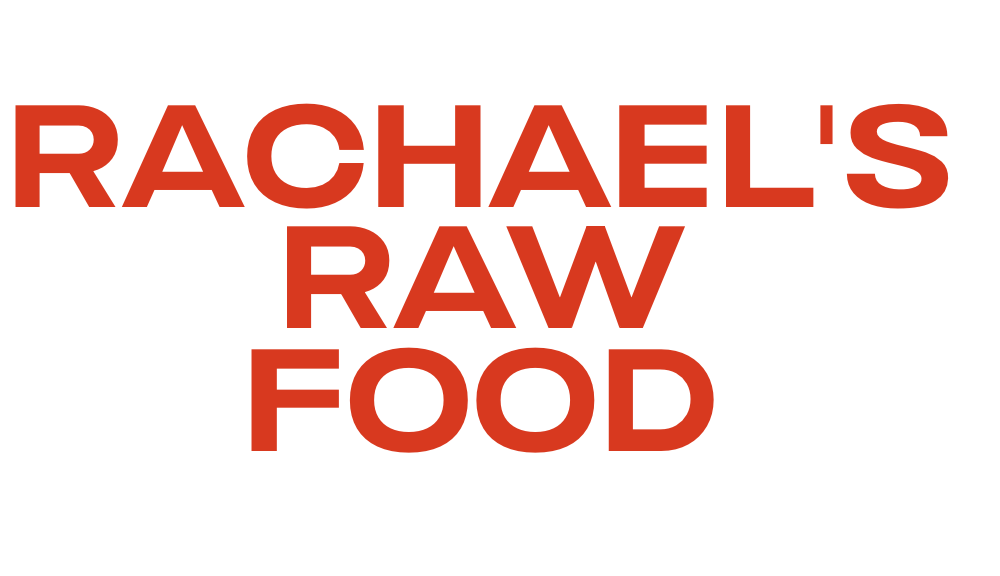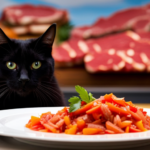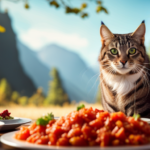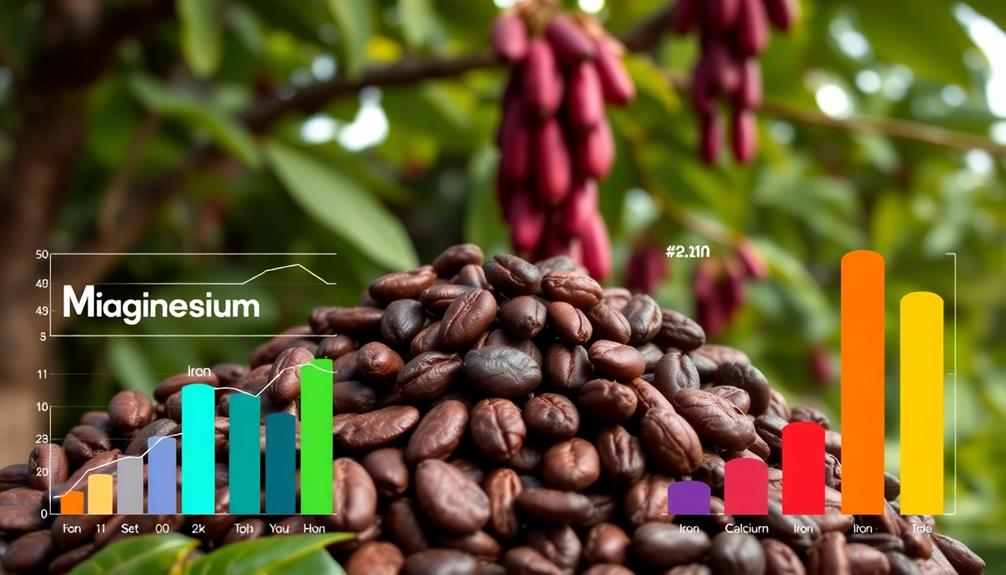Hello! I’m a specialist in veterinary nutrition, and today, our topic of discussion is the BARF raw diet. This feeding approach has gained popularity lately, but does it truly offer the benefits for our pets that its supporters suggest?
In this article, I’ll explain what the BARF diet entails and provide advice on whether you should consider trying it out with your pet. The acronym BARF stands for ‘Biologically Appropriate Raw Food’ or ‘Bones And Raw Food’. As the name suggests, the idea behind this style of feeding is to mimic an animal’s ancestral diets by providing them with meats, organs, bones and other raw ingredients.
By doing so, advocates believe that pets can receive optimal nutrition while avoiding processed foods and additives. But does this method actually have any benefits? Read on to find out more!
Overview Of The Barf Diet
The BARF diet, or Bones and Raw Food diet, is a growing trend among pet owners looking to provide their furry friends with more healthful meals. As the name implies, this food plan consists of uncooked bones and other raw ingredients that are designed to replicate what your dog would eat in the wild.
When considering cost effectiveness and meal planning for your pup’s dietary needs, it can be difficult to determine which path you should take — commercial kibble or a home-prepared meal? The answer may lie in the BARF diet.
As a veterinary nutritionist, I believe that BARF diets offer several advantages over pre-packaged dry foods. Not only does it eliminate preservatives and fillers found in most kibbles but also allows you to monitor exactly what goes into each meal. This means careful consideration can be given to nutrient balance as well as providing variety by including different proteins such as fish, eggs, beef and pork products. Additionally, ingredients can be sourced from reliable organic sources whenever possible.
When done properly, preparing meals on the BARF diet doesn’t have to break the bank either; budgeting for an appropriate amount of meat per week will help ensure that your pup gets all the nutrients they need while still being mindful of costs associated with feeding them a healthy balanced diet.
With some research and effort, a nutritious raw diet tailored specifically for your pooch can become part of anyone’s daily routine – helping make mealtimes healthier and happier! By understanding how beneficial this type of diet can be for our pets we can better equip ourselves when making decisions about their nutritional needs moving forward.
Benefits Of A Raw Diet
The BARF diet is a raw food diet, specifically designed for dogs and cats. This type of diet encompasses both environmental and ethical concerns as it eliminates processed or cooked foods that have been linked to poor health outcomes.
By providing your pet with whole prey such as chicken necks or beef mince, you are offering them nutrient dense meals while ensuring they remain healthy and happy.
Raw diets provide many benefits including improved digestion, better oral hygiene, increased activity levels, reduced allergy symptoms and healthier skin and coat. Additionally, feeding your pet a raw diet can help reduce the environmental impact from conventional farming practices by avoiding intensively farmed meats which often contain growth hormones and antibiotics.
Furthermore, because wild-caught game birds are used in some recipes for the BARF Diet, there are fewer ethical implications associated with this type of nutrition than other commercially prepared pet foods.
Overall, feeding a raw diet may benefit both you and your pet in terms of nutritional value, convenience and sustainability. However, potential risks should also be considered before making changes to your pet’s diet – things like bacterial contamination, choking hazards or allergies could all affect their wellbeing if not managed correctly.
To ensure the safety of your pet when transitioning onto a raw diet it is important to seek advice from an experienced veterinarian who can assess any underlying conditions before recommending a suitable meal plan.
Moving forward into the next section we will discuss these potential risks in more detail so you can make an informed decision about what’s best for your beloved companion animal.
Potential Risks Of Feeding Raw
When it comes to feeding a raw diet, there are certain risks that must be taken into account. While some people may find the idea of giving their pup food in its natural state appealing, it is important to remember that with this type of diet come potential dangers.
One of the most crucial aspects when considering a raw diet for your canine companion is understanding both the potential benefits and risks associated with such an approach. From a veterinary nutritionist’s perspective, one of the primary concerns related to feeding dogs a raw diet has to do with proper food storage and handling. Raw meat can easily become contaminated if not handled properly, leading to serious illness or even death due to bacterial infection.
Furthermore, dental hygiene should also be considered when deciding on whether or not to feed your dog a raw diet; as hard bones can cause severe damage if chewed incorrectly. It is therefore essential for pet owners who choose to pursue this kind of nutritional regimen to educate themselves thoroughly on proper food handling and preparation practices in order to prevent any health issues from arising later down the line.
With these considerations addressed, we can now move onto discussing what nutritional requirements need to be met when providing a raw diet for dogs.
Nutritional Requirements For Dogs
Now that we have discussed the potential risks of feeding raw, it’s time to consider nutritional requirements for dogs.
While alternative diets and diet trends may be popular among pet owners, it is important to ensure that their pup is receiving all of the nutrients they need for a healthy lifestyle.
A balanced diet should provide adequate protein, fats, carbohydrates, vitamins, minerals and water for your furry friend. It is also essential to look at the calorie content as not all foods are created equal in terms of energy density and this can play an important role in overall health.
Additionally, if you decide to feed your dog a raw or homemade diet then you must make sure that it is providing complete nutrition and meeting AAFCO (Association of American Feed Control Officials) nutrient guidelines.
When selecting food for your pooch always take into account age, weight, activity level and any existing medical conditions when choosing what type of food best suits them. A veterinary nutritionist can help you find the right balance without compromising on taste so both you and your pup will be happy!
Now let’s explore how cats differ from dogs nutritionally speaking.
Nutritional Requirements For Cats
They say an ounce of prevention is worth a pound of cure, and nowhere is that more evident than in pet nutrition. Barf raw dieting for cats has been gaining traction as a way to ensure optimal health for our feline friends.
The barf raw diet emphasizes selection of real food ingredients — like fresh meats, fruits, vegetables and supplements — over processed commercial cat foods. It also offers cats the opportunity to eat their meals the same way they would in nature: by tearing into chunks of meat or crunching through whole bones.
When it comes to feeding your cat with this type of diet, you should always make sure that your kitty’s nutritional requirements are being met. Cats need certain vitamins and minerals on daily basis to stay healthy and thrive; these include taurine, arachidonic acid, Vitamin A & E and Niacin among others.
Additionally, when selecting food sources for your cat’s raw diet you will want to focus not only on protein but also healthy fats from fish oils and other animal sources – such as liver – which provide essential fatty acids critical for good coat condition and overall health.
It is important to note that while some human food may be appropriate for cats when fed appropriately in moderation (cooked chicken breast or cooked eggs), there are many human foods considered toxic or dangerous when consumed by felines including grapes/raisins, onions/garlic, mushrooms and chocolate to name just a few.
As long as care is taken when selecting items for inclusion in a balanced barf raw diet plan you can help ensure your beloved fur baby eats safely and remains healthy! With that said let us move onto discussing sources of proteins available for pets…
Sources Of Protein For Pets
Hi everyone! Today, we’re going to be discussing the different sources of protein for pets.
We’ll cover everything from meat and fish, to eggs, organ meats, dairy, insects, legumes, seeds, supplements, vegetables, fruits, grains, nuts, bone broth, and even insect-based diets!
I’m excited to explore this topic with you, so let’s get started!
Meat
As a veterinary nutritionist, I always recommend considering the BARF raw diet for your pet.
Meat is an excellent source of protein and provides many essential nutrients that canines need to maintain good health.
When using meat as part of this type of diet, it should be ground or chopped up with sharp knives so that your pet can easily digest it.
Cooking the meat removes most of the natural enzymes and vitamins found in uncooked meat, so grinding meat helps keep those beneficial elements intact.
Additionally, grinding allows you to incorporate bones into their meals which are important sources of minerals like calcium and phosphorus.
Overall, ingesting freshly ground meats ensures that your pup will receive maximum nutritional value from each meal!
Fish
Fish is another protein source that can make a great addition to your pet’s diet. It provides essential fatty acids, like omega-3s and DHA, which are important for healthy skin and coat as well as cognitive development.
However, it’s important to note that some fish have higher levels of mercury which may be toxic in high doses. Additionally, dogs can develop allergies to certain types of fish proteins so if you choose this option you should introduce it slowly into their meals while monitoring any adverse reactions they might have.
I always recommend giving them cold water fish such as salmon or tuna because these contain more beneficial substances like Omega 3 fatty acids and fish oils than other varieties. Plus they’re packed with nutrients and minerals that support overall health!
Sources Of Fats For Pets
Raw diets are becoming increasingly popular for pet owners, and one type of raw diet that is gaining popularity is the BARF (Biologically Appropriate Raw Food) diet. This diet involves feeding pets a combination of organically sourced raw meats, bones, fruits, vegetables, dairy products, and eggs.
One important source of fats for this type of diet is raw fish. The fatty acids found in raw fish can be beneficial to your pet’s health as they provide essential nutrients such as Omega-3s and other polyunsaturated fatty acids which are known to support healthy skin and coat condition while also aiding joint function. Additionally, these fatty acids have been shown to boost immune system response so it can fight off disease more effectively.
When sourcing raw fish for your pet’s meal plan, look for options that are sustainably caught or farmed with minimal human intervention (for example wild salmon). It’s best to avoid farm-raised varieties since they tend to contain higher levels of contaminants than their wild counterparts. Taking these steps will ensure that you’re providing your pet with nutritious meals without compromising their safety or well-being.
With the proper sources chosen from the start, you’ll be able to confidently enjoy all the benefits of feeding them a BARF diet.
Now let’s take a look at what sources of carbohydrates should be included in our pet’s meal plans…
Sources Of Carbohydrates For Pets
When it comes to feeding pets a balanced diet, carbohydrates are an essential component. There are several sources of carbohydrates available for pet owners and veterinarians must consider cost effectiveness and environmental impact when choosing the right option.
The most popular source of carbohydrates is grains such as rice, corn, barley, wheat, and oats. Grain-based diets can be very affordable and provide important vitamins and minerals that pets need to stay healthy. They also have a low environmental impact since they don’t use many resources or create pollution during production. Additionally, grain-based diets often contain prebiotics which help support good gut health in animals.
Vegetables like sweet potatoes, squash, carrots, peas, beans and greens can all make great sources of carbohydrates too. These options tend to be more expensive than grain-based diets but may offer additional benefits such as higher levels of certain vitamins or antioxidants. Vegetable-based foods also have a lower environmental impact due to their sustainable growing methods compared to grain farming techniques.
In addition to these two primary sources of carbohydrates for pets there are some other alternatives worth considering including:
- Fresh fruits like apples, bananas and pears
- Legumes such as lentils and split peas
- Alternative whole grains like quinoa and millet
These options generally come with a higher price tag but may offer unique advantages based on the individual needs of your pet.
No matter what type of carbohydrate you choose for your pet’s diet it is important to discuss with their veterinarian first before making any changes so that nutritional requirements are met while still being mindful of budget constraints and environmental impacts.
Sources Of Vitamins & Minerals For Pets
As the saying goes, “You are what you eat.” This is especially true for our beloved pets and their diets should not be taken lightly. The BARF (Biologically Appropriate Raw Food) Diet has been gaining popularity among pet owners who understand the importance of providing a balanced diet that mimics a dog or cat’s natural evolutionary food sources in terms of nutrients and vitamins.
The following table provides an overview of the essential vitamins and minerals present in raw feeding diets:
| Nutrient | Sources | Benefits |
|---|---|---|
| Vitamins A & D | Fish oils, liver, eggs | Promote healthy growth & development, strong bones & teeth, good vision, improved skin & coat health |
| Calcium | Dairy products, green leafy vegetables | Strong bones & teeth; promotes muscle contraction and nerve conduction |
| Phosphorus | Meat-based proteins; dairy products | Helps with metabolism and cell maintenance; necessary for energy production& utilization |
| Iron | Organ meats, fish | Necessary for red blood cell formation to carry oxygen throughout body tissues; helps maintain energy levels |
Raw nutrition offers numerous benefits when it comes to keeping your pet healthy as it provides all of the key elements needed for optimum wellbeing such as protein, fats, carbohydrates, enzymes and other micronutrients. Feeding them these nutrient-rich foods can help keep their immune system functioning properly while also promoting better digestion so they can absorb more from the foods they consume. Being able to provide your pet with this type of quality nutrition will ensure that they live longer lives filled with optimal health.
Now that we have discussed some basic information about raw feeding diets and their potential nutritional benefits for our furry friends let us move onto selecting quality ingredients to make sure that every meal packs a punch!
Selecting Quality Ingredients
When it comes to selecting quality ingredients for your pet’s BARF raw diet, the most important thing is sourcing clean and high-quality ingredients. This means that you should buy from reliable sources like local farms or trusted companies who specialize in providing balanced meals for pets.
You also want to make sure that all of the meats are fresh and free from any hormones, antibiotics, and preservatives. It’s also a good idea to get familiar with the different types of meat available so you can create a well-balanced meal plan tailored specifically to your pet’s individual needs.
For example, some proteins may be better suited for certain life stages while others are more appropriate for specific health conditions. It’s always best to consult with your veterinarian before beginning any new feeding regimen.
Your pet deserves the highest quality nutrition possible which is why taking time to research and understand what goes into their food is essential. Not only will this help ensure they receive all the nutrients they need but it can also give them peace of mind knowing their meals are sourced from safe places!
Tips on Choosing Quality Ingredients:
-
Research sources thoroughly – look for reputable brands, farms or suppliers
-
Make sure all meats are fresh & free from hormones, antibiotics & preservatives
-
Get familiar with the different types of protein available for different life stages & health conditions
By understanding what makes up a healthy BARF raw diet and where these ingredients come from, owners can have confidence knowing their pet has access to balanced meals and nutritious snacks every day!
Feeding Guidelines & Portion Sizes
The BARF raw diet is a great way to provide your pet with complete nutrition and keep them healthy, but it’s important to follow some basic guidelines when feeding this type of diet.
For example, let’s say you’ve just finished preparing a meal for your furry companion – storing the food properly is essential in order to prevent bacteria from spoiling the meal or causing an upset stomach.
When storing BARF meals, opt for airtight containers that can be placed in the refrigerator or freezer. Make sure to label the container with the date prepared so that you know how long it should remain safe to consume.
If stored correctly, most raw foods should last up to three days in the fridge and six months if frozen. It’s also recommended that any unused portions are disposed of after four hours at room temperature as bacteria multiplies quickly once temperatures reach seventy-five degrees Fahrenheit (twenty-four degrees Celsius).
To avoid contamination between meals, be sure to thoroughly wash all surfaces used during preparation and cleanse utensils such as knives and cutting boards before using again.
Additionally, pets should always have access to plenty of fresh water while eating their meals – especially if they’re consuming dry kibble alongside raw meat!
With proper hygiene practices in place, you can rest assured knowing that you’re providing your pet with quality nutrition without compromising safety. Now let’s move on to discussing hygiene & safety considerations when following a BARF diet.
Hygiene & Safety Considerations
It is important to consider the hygiene and safety of a raw diet when transitioning your pet to BARF. Sanitary practices are essential for successful implementation of this type of diet, as well as adhering to good storage techniques that reduce risk of contamination from bacteria like Salmonella and E. coli.
When preparing food for your pet’s meals, it is best practice to use separate cutting boards, utensils, and surfaces than you would use for human consumption items. This will help prevent cross-contamination into human foods or other areas in the kitchen where humans may come in contact with these potentially dangerous bacteria. Additionally, any surface that comes in contact with raw meat should be cleaned properly before reuse with hot water and soap. It is also recommended to wear gloves while handling raw meats and other ingredients used in the preparation process.
Furthermore, storing perishable items following their purchase or delivery can help ensure they remain safe for consumption by your pet. Keeping meats frozen until just prior to meal prep time is ideal; however if thawing takes place on countertops, do so within an hour after being taken out of the freezer. Refrigerated items should not remain at room temperature for more than 2 hours total (1 hour during defrosting/cooking phase). Discard anything left out longer than that or that has been stored improperly as it could make your pet sick.
These steps can go a long way towards helping keep both you and your pet healthy throughout the transition period to a BARF diet! Now let’s move onto transitioning tips…
Transitioning To A Barf Diet
Switching your pet to a BARF, or biologically appropriate raw food diet, can have major health benefits. But transitioning from kibble to raw requires careful consideration and planning. Here are some tips on how to transition your pet safely while taking advantage of the many benefits that come with feeding them a species-appropriate diet.
It’s important to introduce new foods slowly over time so as not to overwhelm their digestive system. To do this, start by mixing small amounts of high quality raw food into what they were previously eating for about two weeks until you gradually increase the amount of raw food in each meal. This helps their body adjust more easily and gives it time to get used to the different types of proteins and fats found in these diets.
BARF has numerous nutritional benefits such as increased absorption rates for vitamins and minerals, improved digestion and nutrient utilization, better dental hygiene due to crunchy bones and enzymes which aid in digesting carbohydrates. Allowing your pet access to plenty of fresh water is also essential when switching them over to this kind of diet because it will help keep their kidneys functioning properly and prevent dehydration.
With careful transition periods and monitoring your pet’s health along the way, they should be able to enjoy all the great benefits that come with following a BARF diet!
Working with a veterinarian is an important part of making sure that you’re providing the right nutrition for your pet’s unique needs throughout every stage of life.
Working With A Veterinarian
When transitioning to the BARF raw diet for your pet, it is imperative that you work with a veterinarian. It’s important to select a vet who specializes in nutrition and has experience working with this type of diet. A qualified professional can help make sure your pet is eating the best food for their individual needs and health condition.
Here are some tips when selecting a vet:
- Make sure they have completed specific coursework or training related to animal nutrition.
- Ask about any certifications they may hold related to veterinary nutrition.
- Find out if they are familiar with the nutritional requirements of different life stages and breeds of pets.
- See if they offer guidance on how to transition your pet from its current food onto a new diet safely and effectively.
A knowledgeable vet can also provide insight into which raw foods are nutritionally balanced as well as what ingredients should be avoided altogether. They will be able to suggest appropriate brands and products that meet these criteria so that you can feel confident in feeding your pet quality meals every day.
Ultimately, having an experienced professional on board during this process will give you peace of mind knowing your pet’s dietary needs are being met properly—and more importantly, safely!
Monitoring your pet’s health throughout this transition is another key factor for success; regular check-ups at the vet office ensure all systems remain strong while adjusting to the new diet plan.
Monitoring Your Pet’s Health
Now that you’ve started your pet on a BARF raw diet, it’s important to monitor their health. Many times changes in nutrition can have an effect on long-term health and development.
According to the American Veterinary Medical Association, up to 10% of dogs may suffer from food allergies. This means monitoring them closely for signs such as skin problems or gastrointestinal distress. Additionally, some pets may experience anxiety issues when switching diets; if this is the case with your pet then they should be monitored regularly by a veterinarian or animal behaviorist.
Another factor to consider when transitioning to a BARF diet is portion control. If too much food is given at once, there could be digestive discomfort and even vomiting or diarrhea. The same goes for feeding too little – not enough nutrients can lead to nutrient deficiencies over time which could affect muscle mass, coat quality and other aspects of overall health.
A good rule of thumb is to provide only what your pet needs each day based on their size and activity level – consult your vet for more specific guidelines tailored to your individual pet’s needs.
Finally, while making sure your pet has access to fresh water throughout the day, pay attention to any drinking habits that seem out of the ordinary – excessive thirst might indicate dehydration or underlying health issues like diabetes mellitus or kidney disease. Providing clean water within reach all day will help ensure proper hydration levels are maintained year-round no matter how active they are during playtime!
Frequently Asked Questions
What Is The Cost Of Feeding A Barf Diet?
When it comes to budgeting for a barf diet, the purchase costs can vary.
It’s important to consider how much food your pet consumes on a daily basis so you don’t overspend or underbuy.
As a veterinary nutritionist, I recommend taking into account the size of your pet and their activity level when deciding which type of barf diet works best for them.
Additionally, look out for deals and discounts at local stores or online retailers that may help with expenses.
Is The Barf Diet Suitable For All Breeds Of Dogs And Cats?
Yes, the BARF diet is suitable for all breeds of cats and dogs.
As a veterinary nutritionist, I recommend following guidelines that take into account each animal’s individual needs when determining how much to feed.
When it comes to dental health, there are many benefits associated with feeding a raw food diet such as improved gum and tooth health due to the natural abrasive action from crunchy bones combined with plenty of fresh produce.
In addition to providing better oral hygiene, this type of diet also provides higher levels of important nutrients for optimal growth and development in all breeds.
Are There Additional Supplements Needed When Feeding A Barf Diet?
Yes, there are additional supplements needed when feeding a barf diet.
Veterinary nutritionists recommend supplementing with specific vitamins and minerals to ensure that your pet is getting the complete nutrition they need for their health.
Poultry safety and ingredient sourcing are also important considerations – be sure to purchase high-quality ingredients from trusted sources.
As always, it’s best to consult with your vet before making any dietary changes for your pet.
How Often Should I Feed My Pet A Barf Diet?
When feeding your pet a BARF diet, it’s important to get the portion sizes and number of meals right.
Many owners make the mistake of overfeeding their pets due to confusion around how often they should be eating balanced meals.
As a veterinary nutritionist, I recommend that you feed your pet two times per day – once in the morning and once at night.
This will ensure that they are getting all the nutrients they need without any serious health issues arising from overeating.
Are There Any Long-Term Health Benefits Associated With The Barf Diet?
The BARF (Biologically Appropriate Raw Food) diet is a raw food diet that has been gaining in popularity for pets. It consists of frozen, commercially sold uncooked meats and vegetables.
While some people are proponents of this type of feeding, there are ethical considerations to consider as well as the pros and cons associated with it.
On one hand, the BARF diet could provide long-term health benefits by introducing variety into your pet’s diet. However, if not balanced correctly it can lead to nutritional deficiencies or even illness from bacteria found in raw meat products.
As a veterinary nutritionist I always recommend consulting with your vet before switching to any new dietary regimen for your pet so you know what nutrients they need for optimal health.
Is the Barf Raw Diet Suitable for Athletes?
Many athletes wonder about the benefits of raw food athlete nutrition. The barf raw diet, consisting of biologically appropriate raw food, may be suitable for athletes. It provides essential nutrients and supports optimal athletic performance. Raw food athlete nutrition benefits include improved energy levels, enhanced recovery, and overall health.
Conclusion
In conclusion, the BARF diet is becoming increasingly popular among pet owners. It has been shown to improve long-term health benefits in dogs and cats due to its natural ingredients.
Furthermore, it can also be tailored to meet individual animal needs as well as breed specific requirements. The cost of feeding a BARF diet varies depending on the brand you choose but averages around $3 per day for an average size dog or cat.
An interesting statistic that many pet owners may not know is that studies have found that pets fed a raw food diet live about 1.5 years longer than those fed commercial diets! So if you’re looking for a healthier alternative to traditional processed foods, consider trying out the BARF diet – your furry friend will thank you!

















